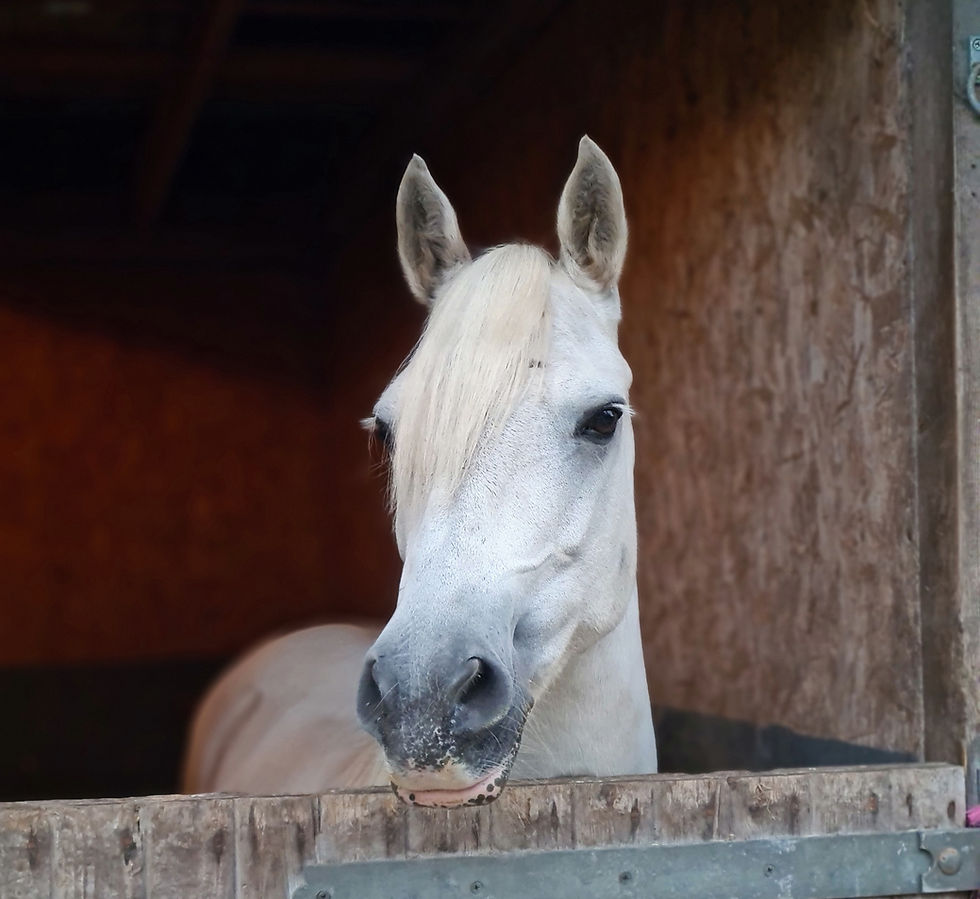Seeds to Stem: August 2025 Flower Farm Update
- Natalie Reed
- Aug 14
- 4 min read
It's mid-August and we're in the midst of another heat-wave.
On one hand it's glorious sunshine with serious 'summer holiday' vibes and armfuls of blooms. On the other, it is relentless watering and a desperate search for cooler surfaces for germinating seeds and seedlings.
Flower farming: reflections mid-season
For me, this is the half-way point in my first season as a flower farmer (I started late!). And there are so many learnings that I could write a book already! (Not a how-to, obviously, more of an adventure story.)
There have been oodles of successes from the support of my local community, who keep coming back for more bunches, the growing interest on social media and, of course, those plants that just keep giving beautiful blooms.
There have also been many failures and, judging from the flower farming community, I'm not alone. Many of us have struggled to persuade seeds to germinate, wrestled with flowers being exceptionally late or early, and struggled to meet plants' demand for water.
Flower farming: mid-season successes
Over the course of the season, I've been building up my stock of perennials. One experienced flower farmer suggested that these should make up 65% of the blooms on a flower farm...and that's my aim. Though it is going to take a while.
Established plants are expensive but I have invested in some echinops, gypsophila and eucalyptus and bought in some others which are notoriously hard to grow from seed.
Eucalyptus is multi-purpose. Not only does it bring a gorgeous calming colour to arrangements and smells divine, but it also dries well. I wish I'd had more it this year, but next year and beyond I will.
Statice is similar, and by crikey has my statice 'given' this summer. I thought I'd planted too many, but it's featured in nearly every bunch I've made for the last two months and is still giving. The ceiling in my office (which is where I'm drying flowers for the autumn and winter) is wall to wall with its gorgeous pink and purple florets too.
Ranuculus, phacelia, salvia, scabiosa, snapdragons, stock and cosmos (apricotta) have also thrived and given 'their all' this year. These are all long-term favourites of mine, have thrived here in previous years and will be certainly making a come back in 2026.
There are also some 'newbies' on the love-list.
Fountain grass (Panicum elegans, 'Sprinkles') adds a finishing touch to any bunch I put it in. The ox-eye daisies were an incredible filler flower earlier in the year as was the canary seed (yes, the one you'd find a wild bird seed mix!). The newly planted rubekia is in full swing and just keeps on producing its stunning yellow flowers. Needless to say, these are all on my grow-again list for 2026.
Flower farming: mid-season 'learnings'
Where to start.....perhaps a list?!
More foliage - all the seasoned flower farmers say it and it is soooo true, GROW MORE FOLIAGE!
Start sweet peas in the autumn - the spring heatwaves hampered germination and it took 4 sowings for me to get enough healthy seedlings to plant out...they are only just starting to flower...in mid-August (oops!)
Dahlias - grow more ball dahlias and fewer cactus and semi-cactus. The dahlias that I'm growing are just too big for my bunches.
Site matters - I need to listen to my gut...I've a couple of beds under an oak tree which I suspected might be too shady for many of the flowers I'm growing and I was right. Fortunately, I hedged my bets and had divided the seedling stock into 3 with 1 lot going out into the field where they have thrived. The others have got all bent out of shape straining for the light. Next year, only those plants which like shade, or flower before the oak is in full leaf will find a home in these shady beds.
Colour schemes - stick to them! While shopping for seeds at the beginning of the year I got distracted by some outliers. These, of course, have thrived but I really struggle to use them in arrangements because I've not got any others which match their colour tones.
Variety is essential - every year is going to be different and who knows what the weather will be so choosing a diverse range of flowers optimises the chances for success.
Just keep sowing #1 - spring will always be peak sewing season but so far I've yet to find a month where there isn't something that can't be started. I've just finished the last of this annuals and am now onto next years biennials. I hoping that by maintaining the momentum throughout the year, I'll ease the pressure come spring.
Just keep sowing #2 - succession sowing is essential...I could have extended the seasons of many of the flowers I've loved this year if only I had a repeat sewing. Another note to self for next year!
Perhaps the most important learnings from 2025 are those cliches - 'to go with the flow' and 'it's not failing, it's learning' .
The beauty of British grown flowers is that all us farmers have success and failures. Afterall, we can't change the weather!
Sometimes we don't do anything wrong but last year's conditions have affected germination rates, this year's weather isn't conductive to some varieties or species or something else is thrown into the mix and we just have to get creative and work with what we've got. Occasionally the 'mother of necessity' forces us to think or do different...and we create something beautiful which would never have existed if the world was how we'd wanted it to be.
































Comments